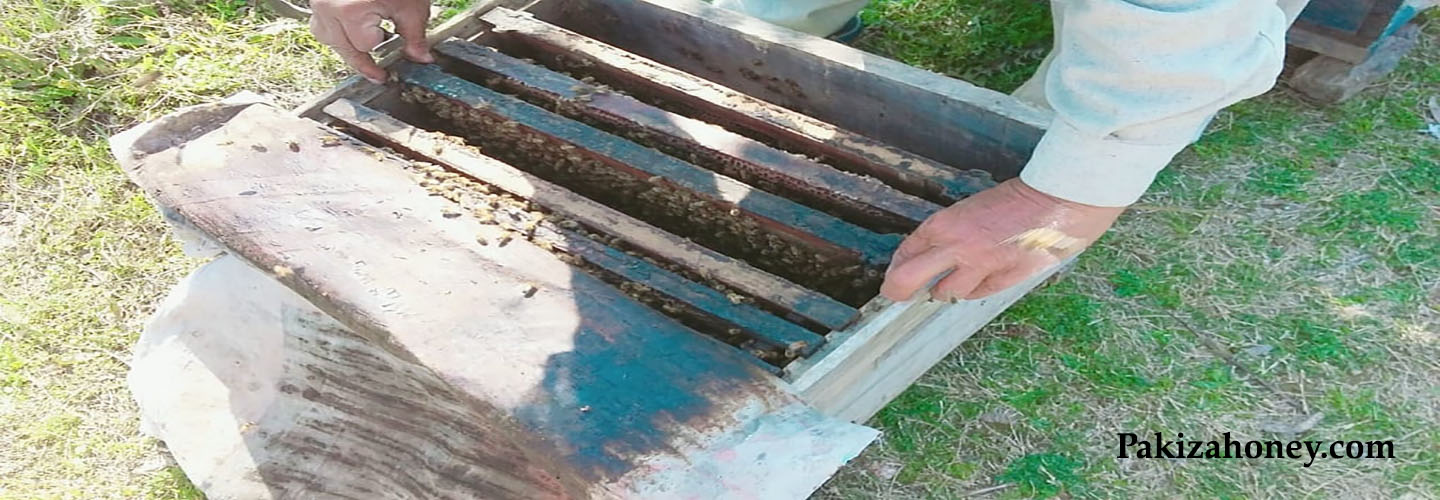- Your cart is empty
- Continue shopping
Honey Farming Methods In Pakistan
Honey farming is an important industry in Pakistan, with a long history of beekeeping and honey production dating back to ancient times.
The country has a diverse range of flora and fauna, which provides ideal conditions for beekeeping and honey production. In rural areas, traditional methods of beekeeping are still practiced, while in urban areas, modern techniques are used to improve the efficiency and quality of honey production.
The main crops grown in Pakistan, such as sunflowers, eucalyptus, mustard, and lucerne, provide important sources of nectar for bees and contribute to the country’s diverse range of honey flavors.
The hilly terrain and varied climates in the country also support the growth of a wide range of plants, which in turn provides a diverse range of honey.
The honey industry in Pakistan employs a significant number of people, both in rural and urban areas, and provides an important source of income for many families.
In Pakistan, honey farming is an important agricultural sector and there are a variety of methods used. The most common honey farming methods include:
-
Traditional Beekeeping:
This honey farming method is widely practiced in rural areas of Pakistan. This method involves placing beehives in natural habitats, such as forests, fields, and orchards, where bees can forage for nectar and pollen.
The hives are typically made of wooden boxes with removable frames that hold the honeycomb. The beekeeper will periodically check on the hives to monitor the health of the colony, treat for diseases and pests, and collect any excess honey.
-
Commercial Beekeeping:
This honey farming method is becoming increasingly popular in Pakistan, with large-scale operations being set up to produce honey for commercial purposes.
This method involves the use of hives in large-scale operations for the commercial production of honey. The hives are typically placed in locations with a high abundance of flowering plants, such as almond orchards, to ensure a steady source of nectar.
The hives are managed by professional beekeepers who are responsible for the health of the colonies and the production of high-quality honey.
-
Urban Beekeeping:
This honey farming method involves the placement of beehives in urban areas, such as on rooftops, balconies, and backyards.
The goal of urban beekeeping is to produce honey while also promoting local pollination and increasing the number of bees in urban environments.
Urban beekeepers typically keep smaller numbers of hives and manage them as a hobby or for personal use.
-
Top-Bar Beekeeping:
This honey farming method is becoming more popular in Pakistan, particularly among farmers and beekeepers who are looking for a more supportable and natural approach to beekeeping.
This method involves the use of hives that are constructed using horizontal bars, instead of frames, and have a more open design that allows for greater bee movement.
The hives are typically made of sustainable materials, such as bamboo, and are placed in natural habitats, such as forests or fields. Top-bar beekeeping is a natural approach to beekeeping, with minimal disturbance to the bees and a focus on preserving their natural behavior.
-
Warre Beekeeping:
This honey farming method is not as common in Pakistan as other methods, but it is gaining popularity among beekeepers who are interested in a more natural approach to beekeeping.
This method is similar to top-bar beekeeping and also emphasizes a more natural approach to beekeeping.
The hives are constructed using vertical boxes that allow the bees to build their comb, as opposed to using pre-made frames. Warre beekeeping involves minimal intervention from the beekeeper and allows the bees to manage their colony with minimal disturbance.
Regardless of the method, all honey farming practices in Pakistan require proper management and monitoring of the beehives to ensure the health of the colonies and the production of high-quality honey. This may include regular inspections, treatment for disease and pests, and providing the bees with adequate food and water.
Importance of different honey farming methods.
Different honey farming methods are important for several reasons:
-
To meet different demands and preferences:
Different methods of honey farming cater to different demands and preferences. For example, traditional beekeeping is suitable for small-scale farmers who want to produce honey for personal use or sale in local markets.
Commercial beekeeping is suitable for large-scale operations that aim to produce honey for commercial purposes. Urban beekeeping is suitable for people who live in urban areas and want to produce honey while promoting local pollination.
-
To promote sustainable and natural practices:
Methods such as top bar and Warre beekeeping are important because they promote more sustainable and natural practices in beekeeping.
These methods allow the bees to live and work in more natural environments and reduce the impact of human intervention on the colonies.
-
To improve honey quality:
Different methods of honey farming can have an impact on the quality of the honey produced.
For example, commercial beekeeping operations may use modern equipment and techniques to ensure high-quality honey production, while traditional beekeeping methods may produce honey that is more unique in flavor and texture due to the natural foraging habits of the bees.
-
To promote local pollination:
Methods such as urban beekeeping are important because they promote local pollination in urban areas.
This is important for the health of the local ecosystem and the production of locally grown crops and food.
In conclusion, different honey farming methods are important to meet different demands, promote sustainable and natural practices, improve honey quality, and promote local pollination.
To check out useful products from Pakiza Click Here
To gain further knowledge Click Here

